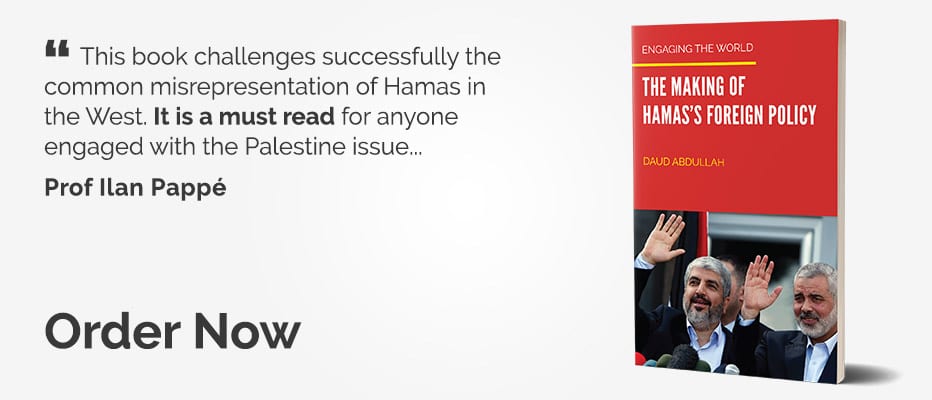A decade ago, artist Alessandra Ferrini sat in front of her laptop and watched for the first time the 1980 movie Lion of the Desert. At the time she was an Italian student who just moved to London, and she shared her flat with a Libyan housemate who had introduced the movie to her.
Lion of the Desert is an epic historical war film about the Second Italo-Senussi War, starring Anthony Quinn as Libyan tribal leader Omar Al-Mukhtar, a Bedouin leader fighting the Royal Italian Army, and Oliver Reed as Italian General Rodolfo Graziani, who defeated Mukhtar.
Alessandra was particularly impressed by the scene when Al-Mukhtar ends up being hanged in public. This was a gesture done by the Italians to show the Libyans that the resistance was useless.
Despite being funded by former Libyan dictator Muammar Gaddafi's government, the movie opened up a window for Alessandra to understand the colonial history of Italy. "Italians don't know about it that well, and they tend to dismiss it, saying that their colonies were minor compared to other countries," she says.
READ: Saudi Arabia is retelling the Hijrah and shaping a new narrative through art
"In school, we don't learn about Omar Al-Mukhtar, which is central to the Libyan narrative," she says. "And we definitely don't know about the war crimes committed by the Italians, from the use of chemical weapons to the concentration camps."
It was Lion of the Desert that kickstarted Alessandra's research around the manipulation of history in politics, specifically, on colonial memory, trauma and reparations, and how this continues into the modern day. "I am interested in the way historical narratives are produced and how ideologies reflect on individuals or societies," she notes.
In conveying these complex topics, the artist is also experimenting in terms of media; in her work the documentary medium blends with video art, installation and performance-lecture. In addition to her artistic practice, she also works as a writer and educator, with all the disciplines communicating and informing each other.
Spectacularising history
One of Alessandra's first video-installations on the theme of colonialism and the re-reading of history, called Sight Unseen was dedicated to Omar Al-Mukhtar. Heavily based on research, the artist looked at how the figure of the rebel leader was exploited by Gaddafi's regime.
In the video, Alessandra interviews Historian Alessandro Volterra, about the controversial history of concealment and appropriation around the memory and documentation – by both Italians and Gaddafi – of Mukhtar's spectacularised state killing.
In the video, images of Al-Mukhtar's capture and execution are seen, but never clearly. These clips are faded into black, they are blurred, or shown for just an instant, mimicking our process of remembering.
Alongside these images, we follow the history of "reliquie" – namely relics or mementos – objects of symbolical strength, like Al-Mukhtar's glasses. These have been said to be stored in an Italian museum, but it was never clear if this was a copy or not.
READ: Tantura represents a microcosm to the whole story of Palestine – Palestinian filmmaker
Negotiating amnesia
Alessandra's other work is Negotiating Amnesia, which is heavily based on research she conducted at the Alinari Archive and the National Library in Florence.
This work develops again in the format of both video and documents organised as installation. The research is based on interviews, archival images and the analysis of high-school textbooks employed in Italy since 1946.
The focus of Negotiating Amnesia is the Ethiopian War of 1935-36 and the legacy of the fascist, which translates into an imperial drive. Divided into four chapters, (Heritage vs Memory; Photography vs Memory; Monuments vs Memory; Education vs Memory) the work aims to reveal the controversial memory and racist politics characteristic of the current historical period, while exposing public and personal strategies of remembering.
The video showcases two different families that had opposite approaches to colonial memory. There is a woman who has donated the photographic archive of her parents to Alinari, has a sort of pride, and has mystified the colonial memory making it into a myth.
This is juxtaposed with a man who stored the photographs in a box in a disorderly fashion. While the father was a convinced fascist who embarked willingly into the Ethiopia war, the son rebelled, becoming a communist. Looking back at these pictures makes him almost embarrassed.
These two approaches and voices strongly exemplify the attitude Italians have towards colonialism and fascism.
Gaddafi in Rome
One of Alessandra's latest works is even more relevant today, with the death of former Italian President Silvio Berlusconi. This is a time when Italians are looking at his disastrous legacy, including his politics with Libya.
The multi-part series, still ongoing, is called Gaddafi in Rome. The work looks at the 2009 meeting between Berlusconi and Gaddafi in Rome, a pivotal event in the story of the cooperation between Italy and Libya.
Based on more than six years of research into the Treaty of Friendship, Partnership and Cooperation between Italy and Libya, the work explores this political event and the consequent media frenzy in Italy which led to the use of real-time reporting, especially by one of the main local newspapers, La Repubblica.
In 2009 Repubblica was the first newspaper in Italy to heavily invest in digitalisation. Alessandra investigated how the event was reported in a multimedia format, through video and writing.
READ: The Middle Eastern presence at Paris Art Week was extensive
"They created this crazy hybrid way of reporting, very much based on the idea of breaking news," she observes. "And they reported it in a very, very manic and obsessive way throughout the three days of Gaddafi's presence in Rome, minute by minute. The digital archive of this event is unprecedented."
In the presentation of the different chapters of Gaddafi in Rome, the artist mixed text, archival material, photographs, colonial postcards, stamps, documents, footage shot and amateur video documentation found on YouTube, the work highlighted the performative character of the meeting.
At the heart of Gaddafi in Rome are two elements. The first is a photograph of Gaddafi at Ciampino airport, where he displayed an image pinned on his chest: a picture of the capture of Omar Al-Mukhtar. The second is the protests sparked by Gaddafi's arrival and presentation.
"Just three months prior to the meeting, Berlusconi went to the parliament in Libya to apologise for the colonial era," recounts the artist. "When Gaddafi arrived in Fiumicino airport, and with that image pinned onto his chest, he defied the idea of the friendship between the two states."
Alessandra acknowledges that the general reaction from the media was that Gaddafi couldn't be trusted, but at the same time, it made memories of colonialism resurface.
"Colonial memory is subconsciously embedded in the state mentality; we can see traces of it in the foreign policy politics of Italy, in regards to migrants in the Mediterranean."
"In that moment it appeared clearly that the imperialist mindset was always there and throughout the Republic, but we are not able to recognise it," adds the artist. "We don't have the language or the means to understand what we're looking at. And, so that image was the catalyst of my research."
In her video work, the artist analyses the language that has been used by both political leaders and how it echoes today's racist discourses on migration. But she also looks at the language the left-leaning La Repubblica employed, conveying a strong sense of orientalism: "The way the media spoke of migrants heavily influenced the push-back policies on migration that took place in the past few years."
An iteration of the project included a new form of artistic expression called "performance lecture", where the academic lecture blends with the artistic performance. "It had been a year and a half that I didn't perform it," says Alessandra. "And every time I do, I need to update some parts of it in the light of current events." It's inevitable. History is forever changing with the present.

![The work of Alessandra Ferrini [Image courtesy of the artist]](jpg/alessandra-ferrini-maxxi1e5c.jpg)

![alessandra-ferrini-my-heritage Alessandra’s work can be seen in Totalitarian Props between 23 June-14 July 2023 at the Africa Centre in London. [Image courtesy of the artist]](jpg/alessandra-ferrini-my-heritage7aea.jpg)
![08_Alessandra Ferrini_ MAXXI_BVLGARI_Prize_AlessandraFerrini_ph.DanielRichardPassafiume-1200x800-1 Alessandra’s work can be seen in Totalitarian Props between 23 June-14 July 2023 at the Africa Centre in London. [Image courtesy of the artist]](jpg/08_alessandra-ferrini_-maxxi_bvlgari_prize_alessandraferrini_ph.danielrichardpassafiume-1200x800-16b24.jpg)
![alessandra ferrini - negotiating amnesia The work of Alessandra Ferrini [Image courtesy of the artist]](jpg/alessandra-ferrini-negotiating-amnesia0460.jpg)
![Alessandra Ferrini 6_MAXXI_MAXXIBVLGARIPRIZE_AlessandraFerrini2_@Roberto-Luigi-Apa-Courtesy-Fondazione-MAXXI Alessandra’s work can be seen in Totalitarian Props between 23 June-14 July 2023 at the Africa Centre in London. [Image courtesy of the artist]](jpg/alessandra-ferrini-6_maxxi_maxxibvlgariprize_alessandraferrini2_%40roberto-luigi-apa-courtesy-fondazione-maxxib5ad.jpg)
![Alessandra-Ferrini- Alessandra Ferrini [Image courtesy of the artist]](jpg/alessandra-ferrini-8d42.jpg)

